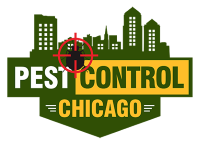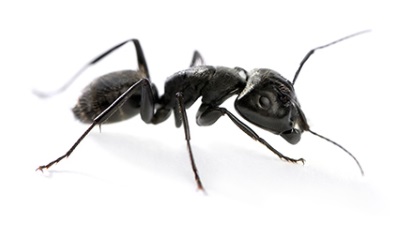Pest Control Chicago for Dummies
Pest Control Chicago for Dummies
Blog Article
The Ultimate Guide To Pest Control Chicago
Table of ContentsThe 25-Second Trick For Pest Control ChicagoSome Known Incorrect Statements About Pest Control Chicago Getting My Pest Control Chicago To WorkHow Pest Control Chicago can Save You Time, Stress, and Money.Pest Control Chicago Can Be Fun For EveryonePest Control Chicago Can Be Fun For Everyone
Growing or collecting a plant prior to (or after) an insect exists minimizes insect damage by avoidance. Capturing and computing a pest's expanding degree days can assist with intending around a pest's lifecycle. Damage tolerance can sometimes be achieved by growing a crop early so that the plants are more powerful, much more resistant, and a lot more forgiving to damages by the time insect bugs exist.
By developing a small, regulated area that the bugs favor, it is possible to draw away parasites far from the key crop. 2 methods for this are trap chopping and strip harvesting. is growing a favored host plant of an insect parasite near the main crop that is to be secured.
If necessary, the bugs can after that be eliminated in the catch crop. Catch plants can be any type of species that the pest preferseven coincide types as the key plant - Residential pest control Chicago. If the trap crop coincides types as the key plant, it should be grown at a time that will best lure the parasite far from the main crop
Everything about Pest Control Chicago
 This method works when collecting a trap plant because it keeps some habitat for the bug. Because of this, the insect does not move to discover new environment in an adjacent higher worth or even more prone crop. https://pstc0ntrlchg.start.page. The strategies currently stated concentrate on minimizing plant exposure to insect pests, however it is also feasible to lower yield loss also when insect damages occurs
This method works when collecting a trap plant because it keeps some habitat for the bug. Because of this, the insect does not move to discover new environment in an adjacent higher worth or even more prone crop. https://pstc0ntrlchg.start.page. The strategies currently stated concentrate on minimizing plant exposure to insect pests, however it is also feasible to lower yield loss also when insect damages occursTo practice IPM in the landscape, select plants that are well suited to the website. Plant them correctly and keep the plants healthy and balanced by meticulously watering, feeding, and pruning them. Keep an eye out for issues on your plants as they occur. If an insect or illness causes inappropriate damage despite preventative initiatives, choose an efficient monitoring technique that will certainly have the least quantity of influence on other living creatures and the environment.
Our Pest Control Chicago Statements
 Look for symptoms the plant shows as a result of bug task. Examine your plants usually. Identify your plants to make sure that the twisted leaves, uncommon pigmentation, or strange-looking frameworks you see are not a typical component of the plant. Try to rule out site-related problems by ensuring that the dirt type, drainage conditions, fertility level, and other environmental conditions agree with for the plant.
Look for symptoms the plant shows as a result of bug task. Examine your plants usually. Identify your plants to make sure that the twisted leaves, uncommon pigmentation, or strange-looking frameworks you see are not a typical component of the plant. Try to rule out site-related problems by ensuring that the dirt type, drainage conditions, fertility level, and other environmental conditions agree with for the plant.Pests and mites usually are connected with particular plants, and they adhere to specific development and look at this web-site behavior patterns as the season proceeds. Usage reference books from the collection or yard center to determine parasites. If you can't find an accurate description there, speak with someone in your local extension workplace. Discover the insect's life cycle, habits, and natural enemies.
If so, an application of a nonselective pesticide can kill them, permitting the pest population to rebound uninhibited by killers and parasites, which might have been supplying substantial control. If a control is needed, think about physical or biorational approaches first. If they are inaccessible or unwise, you might need to meticulously make use of a conventional chemical control.
The Buzz on Pest Control Chicago
 Some aphids and termites can be knocked off by splashing the plant with water. Bagworm larvae can be selected off an infested plant. You can use catches to catch particular pests, and obstacles to safeguard plants from insect attack or disease infection. One effective approach for regulating gypsy moth larvae on small numbers of trees is to place a band of folded burlap around the tree trunk to provide a synthetic resting site for the caterpillars, and afterwards destroy the caterpillars that gather there.
Some aphids and termites can be knocked off by splashing the plant with water. Bagworm larvae can be selected off an infested plant. You can use catches to catch particular pests, and obstacles to safeguard plants from insect attack or disease infection. One effective approach for regulating gypsy moth larvae on small numbers of trees is to place a band of folded burlap around the tree trunk to provide a synthetic resting site for the caterpillars, and afterwards destroy the caterpillars that gather there.In some instances, the very best service may be physically getting rid of the plant and changing it with one that will certainly not be influenced by the bug or illness. Thinning jampacked plants to improve air blood circulation can reduce many condition issues. Biorational techniques can be split right into two groups. The very first team consists of living organisms that can eliminate the parasite.
An example of a method that utilizes a normally happening biochemical is the microorganism Bacillus thuringiensis (Bt). Bt includes a healthy protein that is dangerous to specific insects, yet harmless to other organisms.
The Best Strategy To Use For Pest Control Chicago
When the sensitive insect parasite eats the splashed leaves, it will ingest the healthy protein and be eliminated. Traditional chemicals are utilized only as a last resource in an IPM program, yet in some cases are one of the most reliable means of control. To have the biggest impact, these materials require to be used on a certain part of the plant when the pest is most at risk.
In most cases, ecologically safe chemicals such as gardening oil or insecticidal soap work selections - https://forums.hostsearch.com/member.php?268653-pstc0ntrlchg. Again, applications have to be timed carefully to have the best effect on the pest insect populace. Since they have no recurring activity after they have dried, soaps and oils are usually the alternative that is the least turbulent to populations of valuable microorganisms
These words, from least harmful to most toxic are: "care," "warning," and "risk." Use these words as standards to assist you pick the least harmful material among the reliable options. For the majority of landscape parasites, you need to think about chemicals in only the first two categories. Some chemical solutions can be applied just by applicators with special training and who are certified by the state's department of farming.
Not known Factual Statements About Pest Control Chicago
Refer to the Woody Ornamental Bug, Mite, and Disease Monitoring Overview, published by Penn State Expansion, or to one more current referral for a listing of materials that are signed up for use on plants in your state. Review the label to be sure that you have actually chosen a product that works against the insect you have identified, and select your timing based upon specialist referrals.
Report this page